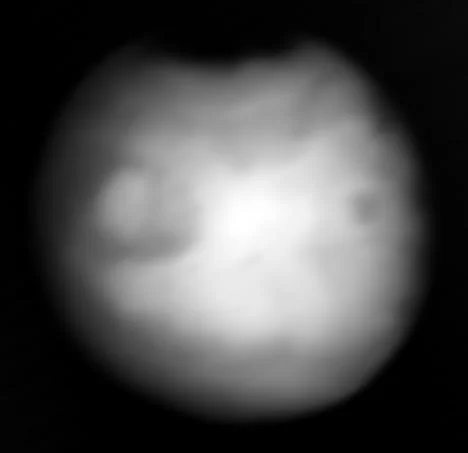
NASA’s Europa Clipper Peeks at Mars, Unveiling Secrets of Jupiter’s Moon
The Europa Clipper, NASA's spacecraft en route to Jupiter's moon Europa, has snagged a remarkable infrared image of Mars. This isn't just a pretty picture; it's a crucial calibration test for the mission's thermal imaging system, E-THEMIS, set to explore the icy depths of Europa and its potential to harbor life. But why Mars?
Think of it as a dress rehearsal. Before tackling the mysteries of Europa, scientists needed to ensure E-THEMIS was working flawlessly. Mars, a well-documented planetary body, offered the perfect opportunity. As Dr. Phil Christensen, Principal Investigator of E-THEMIS, stated, "We wanted no surprises in these new images...The goal was to capture imagery of a planetary body we know extraordinarily well and make sure the dataset looks exactly the way it should…"

The image, a composite of over 1,000 grayscale snapshots, was taken during a gravity assist flyby on March 1, 2025. Europa Clipper skimmed only 550 miles above the Martian surface, utilizing the Red Planet’s gravitational pull to adjust its trajectory before continuing its 2-billion-mile journey to Jupiter.
So, what makes infrared imaging so special? Unlike traditional cameras that capture reflected light, E-THEMIS detects heat signatures, revealing hidden thermal patterns. Imagine having X-ray vision for planets! On Europa, this will allow scientists to identify regions where the moon's subsurface ocean may be closest to the icy crust, potentially pinpointing areas with recent geological activity.
"If Europa is active, fractures will appear warmer than surrounding ice where the ocean approaches the surface," notes Dr. Christensen. This capability is crucial for understanding Europa's potential habitability.
The data gathered from Mars is undergoing rigorous comparison with existing thermal maps from NASA's Mars Odyssey orbiter, ensuring E-THEMIS's accuracy. Furthermore, the Mars flyby served as the first full in-flight test of Clipper's radar instrument, which couldn't be completely tested on Earth.
This successful test also marks a significant step in space exploration. The processing capabilities needed to handle such massive datasets highlight advancements in computational power. It also paves the way for improved deep space communication systems and potentially assists in resource detection for future Moon and Mars missions.
Europa Clipper is scheduled to enter Jupiter's orbit in April 2030 and will embark on 49 close flybys of Europa. Its mission: to determine the thickness of the moon's icy shell, investigate its composition, and characterize its geology. Will Europa reveal evidence of life? Only time will tell.
What hidden secrets will Europa's ocean unveil? Share your thoughts and speculations in the comments below!